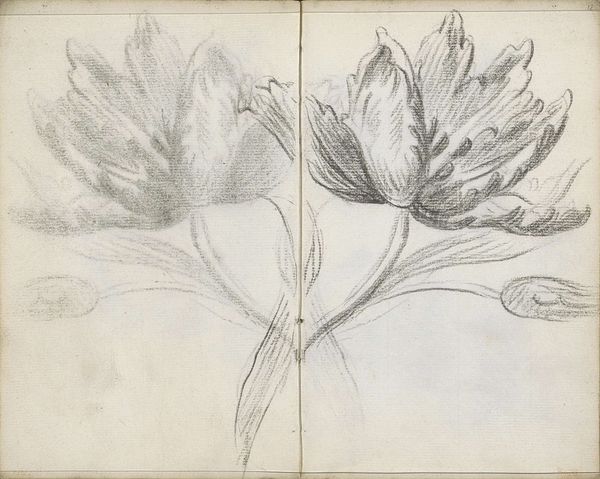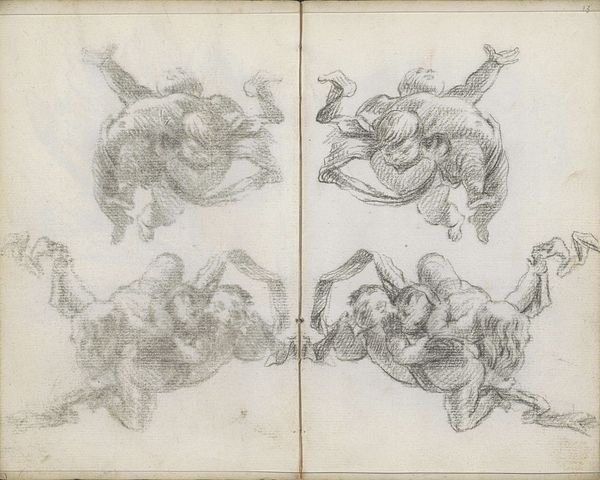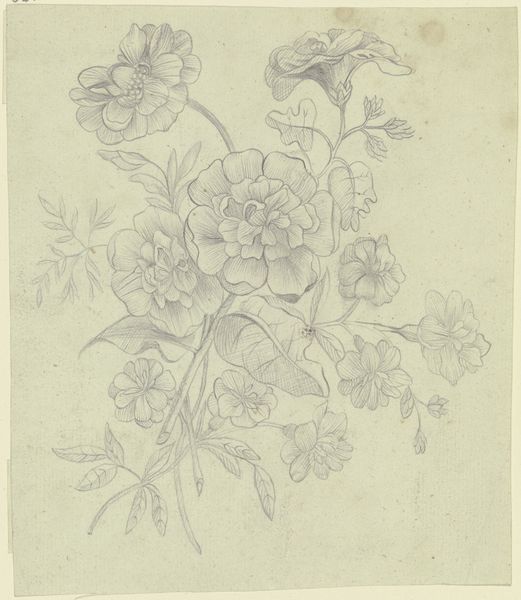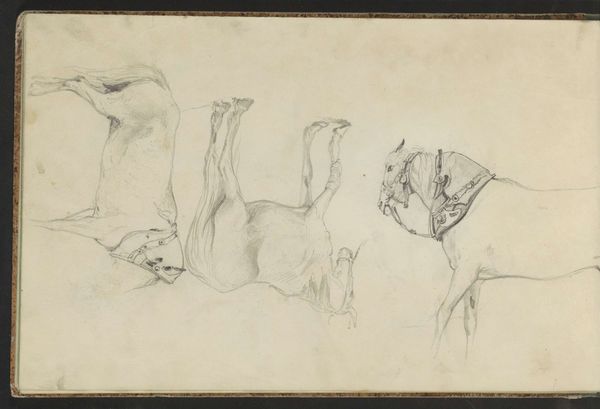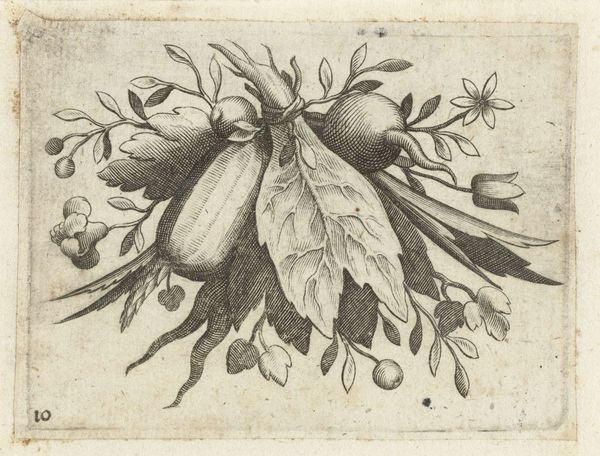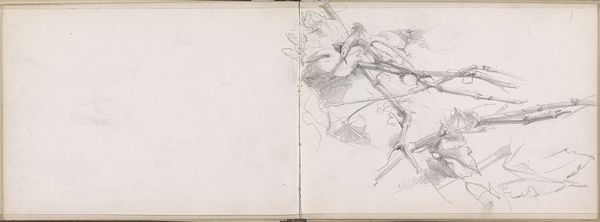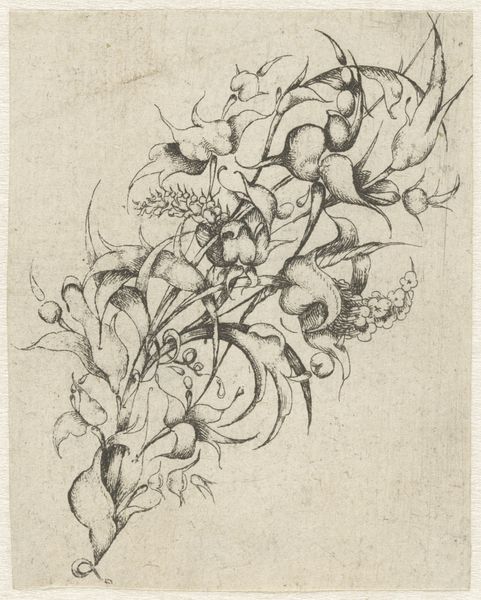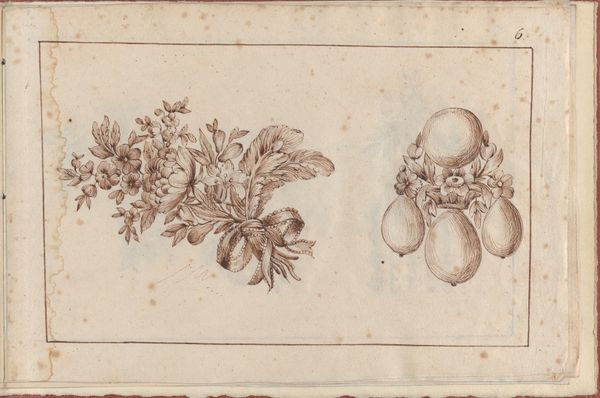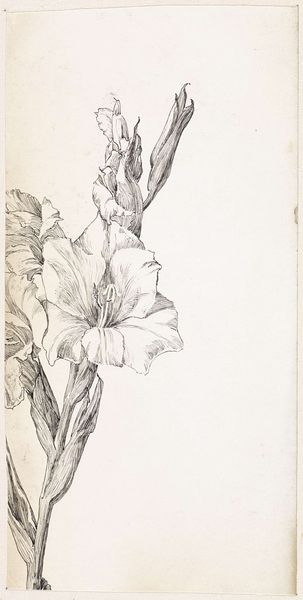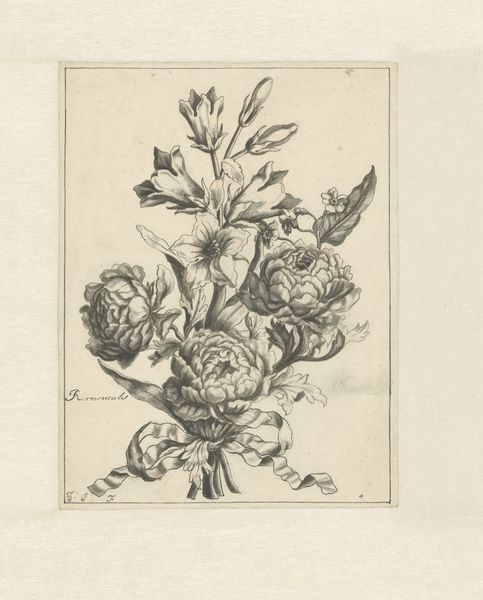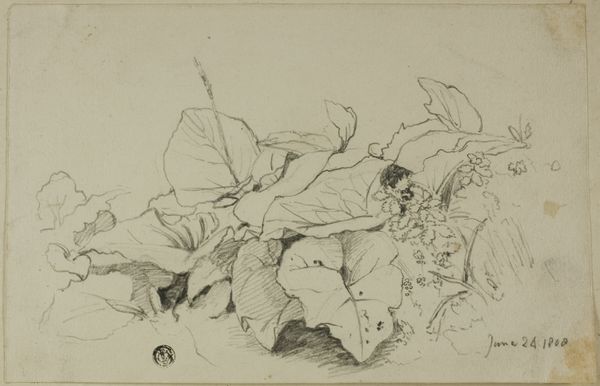
drawing, pencil
#
drawing
#
toned paper
#
light pencil work
#
baroque
#
pen sketch
#
pencil sketch
#
flower
#
personal sketchbook
#
ink drawing experimentation
#
pen-ink sketch
#
pencil
#
pen work
#
sketchbook drawing
#
sketchbook art
Copyright: Rijks Museum: Open Domain
Editor: So this is "Flowers and Leaves," a pencil drawing by Petrus Johannes van Reysschoot, made sometime between 1710 and 1772. It has a quiet, almost secretive feel to it. The lightness and softness of the pencil really invite you in close. What strikes you most when you look at this sketch? Curator: The way the artist uses light and shadow certainly whispers secrets, doesn't it? These aren’t just botanical studies; the repetition and doubling remind me of memento mori, common during the Baroque era, but here, the decaying flower is gently mirrored by its fading echo. The ephemeral quality emphasizes the transient nature of beauty and life itself. Editor: Oh, that’s interesting. The "echo" almost makes the artwork more haunting. Would these sketches likely be a source of ideas for larger paintings? Curator: Possibly. The flower itself carries a great deal of symbolic weight. Often representing love, fragility, or even the Virgin Mary, depending on the specific type depicted, though here it’s harder to make a definite identification. How do you think this careful preparation might affect the viewer's experience, centuries later? Editor: I never would have guessed a simple drawing of flowers could hold such depth! I suppose appreciating that it comes from a sustained study enhances the feeling of value – they are imbued with meaning. Thanks so much for your insights. Curator: Indeed. By looking beneath the surface, we can find a richer understanding of not only the artist’s intention but also our own relationship with the symbols and emotions embedded within the image.
Comments
No comments
Be the first to comment and join the conversation on the ultimate creative platform.
